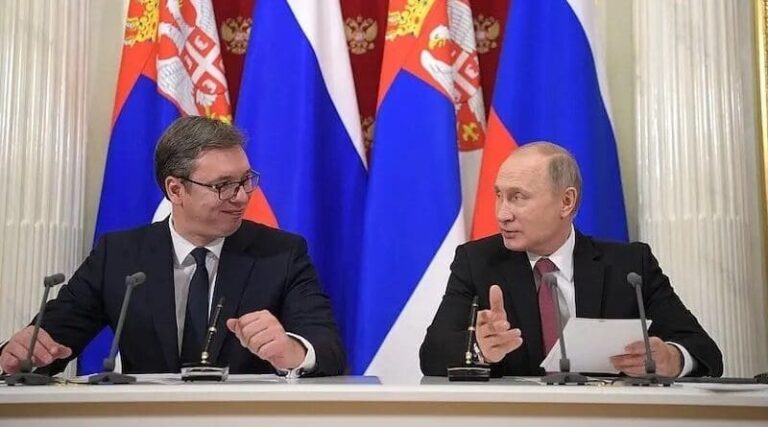(A UNICEF poster details a polio vaccination campaign for Ukrainian children)*
Polio Eradication in Ukraine
Joniel Cha
Of the 56 poliovirus cases around the world in 2015,[1] two such cases in June and July led to paralysis in children due to a vaccine derived from a Type 1 polio strain in Ukraine.[2] This outbreak of polio poses a serious risk and threat to Ukraine’s neighbors, including European Union (EU) countries, and is particularly exacerbated by the ongoing war in eastern Ukraine and migration of refugees through the region. To make matters worse, these polio cases were not confirmed until August 2015 and the outbreak was not officially announced until September 2015. How did this happen?
Throughout the past several years, the Independent Monitoring Board of the Global Polio Eradication Initiative (GPEI), the WHO Regional Office for Europe, and the European Center for Disease Control and Prevention (ECDC) warned about the poor conditions of children’s preventative health services in Ukraine, but to no avail. The two children contracted polio in western Ukraine (right on the EU’s doorstep), which were the first cases of polio reported in Ukraine in 19 years.[3] This outbreak and slow response exposed the shortcomings of Ukraine’s immunization and overall health system, which is hindered by deep-seated corruption, insufficient funds, ineffective public health communication, government neglect of the country’s health system, and widespread popular mistrust.
Ukraine, especially the “black box” of eastern Ukraine, is replete with weak health security measures to prevent, detect, and respond to threats.[4] Analyzing each country that had a poliovirus case in 2015, the Center for Strategic and International Studies (CSIS) published a report that traced three recurring elements which undermine health security in each endemic country: “areas of insecurity, the disruption to infrastructure, access, and government inattention” that this brings.[5] The report predicted a proliferation of infectious outbreaks in Ukraine, with those at higher risk including 5.2 million people living in conflict areas and over 1.4 million internally displaced persons.[6]
A variety of factors, including insecurity, disruption to infrastructure and access, and government inattention explain Ukraine’s failure in effectively responding to the polio outbreak. Insecurity in Ukraine, caused by civil unrest and war significantly impacts the spread of viruses and diseases including polio.[7] This instability directly results in disruption to infrastructure and access to healthcare; however, bureaucratic walls, corrupt healthcare practices, and the often-remote locations of medical centers also disrupt access. Violence and threats of violence restrict polio vaccinators and health/disease monitors, as well as amplify population migration. These risks are further magnified by worsened health systems in conflict zones and the flight of refugees who have poor access to sanitation and nutrition. As stated above, government inattention to the outbreak of the poliovirus in Ukraine and, instead, prioritization of other issues led to paralysis in two children in 2015. Moreover, complacency from country health and political leaders is a threat to the success of polio eradication in Ukraine, particularly as government officials focus on the economy and the war instead of on public health. Additionally, the media influenced public opinion by exposing governmental corruption related to healthcare services and by spreading rumors of vaccines leading to diseases and ultimately death. These factors have contributed to the lack of political will, public support, government funding, and policy implementation necessary to eradicate polio in Ukraine.
Under Ukrainian standards, children are required to be vaccinated against 10 infectious diseases including polio. The percentage of children vaccinated fell from 80 percent in 2008 to 50 percent in 2013, due in large part to disruption of healthcare and access and government inattention.[8] This percentage continued to worsen in Ukraine through 2014 and subsequent years. Case in point: only 14% of one-year-olds had the three recommended doses of the polio vaccine in 2014 and 2015 (see Table 1.1).[9] The ECDC estimates that there are 1.5-1.8 million polio-susceptible children in Ukraine.[10]
Table 1.1: Ukraine’s Polio Immunization Coverage, 2011-2015[11]
Government complacency around providing adequate policy prescriptions and funding stifles preventative health measures in the countries surveyed. This is also true in Ukraine, where insufficient funds and corruption hamper polio eradication efforts. In 2013, the state budget was covering only 65 percent ($38 million USD) of vaccination needs.[12] An international appeal for $14 million to purchase vaccines produced only $40,000 in response.[13] Both foreign and domestic pharmaceutical companies have created artificially high prices in their bidding, as much as three times international norms.[14] Many of the owners and managers of drug companies are former classmates and friends of government officials. Due to these tight informal relationships and political ties, the international community’s diplomatic pressure and influence prove inadequate to transform the Ukrainian government’s policy and implementation to address polio eradication.
UNICEF, WHO, USAID, and Rotary International already had epidemiologists and surveillance advisers in Ukraine. Ellyn Ogden, USAID’s coordinator for polio eradication, declared of Ukraine, “No other country in the world is in such a dire situation.”[15] Bill Gates personally urged President Poroshenko to distribute the UNICEF-procured vaccines. In tandem, the Canadian and US ambassadors, the European Commission, and WHO Director-General Margaret Chan pressured Ukrainian officials. Yet these efforts failed to bring about their desired effect in Ukrainian policymaking to stop the advance of the poliovirus outbreak.
Polio vaccines purchased by the Canadian government arrived in spring 2015. Initially the WHO/UNICEF vaccines were unused due to cold chain violations. Viktor Serdyuk, the president of the Ukrainian Council for Protection of Patients’ Rights and Safety submitted a petition to President Petro Poroshenko to destroy the vaccines. Some Ukrainian officials denied there was an outbreak, including Olga Golubovska, the Ministry of Health’s infectious disease head. The vaccine was perceived to be a “Third World” vaccine, and was politicized as a Russian-concocted strategy to prevent Ukraine’s accession to the EU. This directly relates to the insecurity and instability factors mentioned as consequences of the war in eastern Ukraine, which further hinder polio eradication efforts.
Because of this politicization of polio vaccination and government complacency, polio eradication efforts have been stunted dramatically in Ukraine. The UNICEF vaccination campaign was intended to cover at least 10 million children under the age of six in three rounds in October 2015-February 2016.[16] Fifteen million doses were delivered to only 5 million children (55% below targets) due to parental refusals, undue contraindications, and misunderstanding over the need to vaccinate all children irrespective of vaccination status.[17] This data may be skewed since physicians still reported children as being vaccinated even when they were not.[18]
Owing to misinformation from the media and contradictions put forth by the government, parents and health professionals grew in distrust of vaccinations over time. Chief Sanitary Inspector of Ukraine Mykola Prodanchuk was fired after violating a 2006 regulation by procuring WHO/UNICEF polio vaccines for delivery without prior registration. The media accused the government of corruption and spread a rumor that vaccines lead to diseases.
A 2014 WHO/UNICEF survey revealed that only 18 percent of mothers thought polio was a dangerous disease, and 27 percent knew it could cause paralysis.[19] In contrast, almost 75 percent of fathers had a positive attitude toward vaccination in general, a dramatic change from 28 percent in 2008.[20]
In conclusion, several factors played into both the preventable outbreak of polio in Ukraine in 2015 and the ineffective response by the government. Moving forward, the international community and Ukraine must take constructive steps towards polio eradication. The newly elected President Poroshenko has a window of opportunity to implement needed reforms. It is imperative for the international community to both increase smart pressure on and sustain support of the Ukrainian government. To mitigate the emerging polio crisis, the International Health Regulations Review Committee must declare the situation in Ukraine a public health emergency and make vaccines more readily available. The Ukrainian government must be pushed on its feet to take assertive policy action complemented with requisite funding to increase access to polio vaccinations and healthcare particularly in rural areas. Since November 2015, Ukraine has been among the US partner priority countries to meet GHSA targets, with a minimum of $1 billion USD investment.[21] With this increased aid, Ukraine must take it upon itself to invest in the eradication of polio.
The Ukrainian government would be well-advised to ask the GPEI to form an independent international panel to counsel Ukraine on dealing with its polio situation and strengthening public opinion on vaccination. Additionally, the GPEI should conduct a risk assessment on polio immunity in refugee communities. Ukraine must undertake greater efforts to peacefully end the war in eastern Ukraine and mitigate the consequent instability and insecurity threatening the efficacy of the public health system. With a ceasefire agreement, health workers and providers can more easily and safely reach previously war-torn communities and administer healthcare services. Finally, the Ukrainian media should follow these government-sponsored health campaigns. The media should work to change public opinion and rebuild trust in the Ukrainian government and in vaccines to help stop the outbreak and eradicate the poliovirus in Ukraine.
Joniel Cha is a first-year M.A. International Relations Candidate concentrating in International Economics and Energy, Resources & Environment at Johns Hopkins University School of Advanced International Studies. He has 11 years of experience working in Eurasia, including 1 year in Ukraine. He holds a B.A. in Leadership & Public Policy and a B.A. in Foreign Affairs with a concentration on Europe from the University of Virginia.
*Source: UNICEF Ukraine (https://www.flickr.com/photos/unicefua/14006881065/)
Licensed for use under Creative Commons Attribution 2.0 Generic license: https://creativecommons.org/licenses/by/2.0/legalcode
________________________________________________________________________________
[1] Nellie Bristol, “Unsettled World Creates New Challenges for Polio Eradication—IMB,” Center for Strategic International Studies, November 20, 2015, https://www.csis.org/blogs/smart-global-health/unsettled-world-creates-new-challenges-polio-eradication-imb
[2] Judyth Twigg, “Polio in Ukraine: Crisis, Challenge, and Opportunity,” Center for Strategic and International Studies – Global Health Policy Center, March 2016, https://csis-prod.s3.amazonaws.com/s3fs-public/publication/160329_Twigg_PolioUkraine_Web.pdf
[3] Ibid.
[4] Ibid.
[5] Bristol, “Unsettled World Creates New Challenges for Polio Eradication—IMB.”
[6] UNHCR, “Internally Displaced Persons,” 2015, http://unhcr.org.ua/en/who-we-help/internally-displaced-people
[7] Bristol, “Unsettled World Creates New Challenges for Polio Eradication—IMB.”
[8] Judyth Twigg, “Polio in Ukraine: Crisis, Challenge, and Opportunity.”
[9] Liam Donaldson, et al, “Now is the Time for Peak Performance,” Independent Monitoring Board of the Global Polio Eradication Initiative, Twelfth report, October 2015,
[10] Judyth Twigg, “Polio in Ukraine: Crisis, Challenge, and Opportunity.”
[11] Nellie Bristol, “WHO’s SAGE Gives Final Nod to April Polio Vaccine Switch,” Center for Strategic International Studies, October 27, 2015, https://www.csis.org/blogs/smart-global-health/who%E2%80%99s-sage-gives-final-nod-april-polio-vaccine-switch
[12] Judyth Twigg, “Polio in Ukraine: Crisis, Challenge, and Opportunity.”
[13] Ibid.
[14] Ibid.
[15] Bristol, “WHO’s SAGE Gives Final Nod to April Polio Vaccine Switch.”
[16] Judyth Twigg, “Polio in Ukraine: Crisis, Challenge, and Opportunity.”
[17] Ibid.
[18] Ibid.
[19] Ibid.
[20] Ibid.
[21] Ibid.



